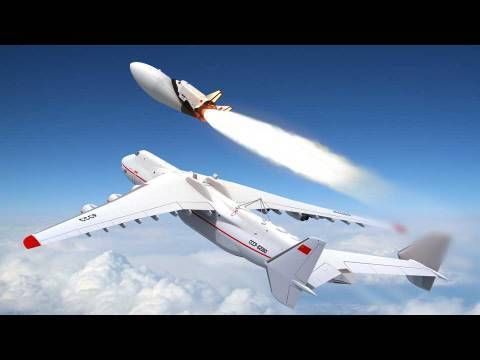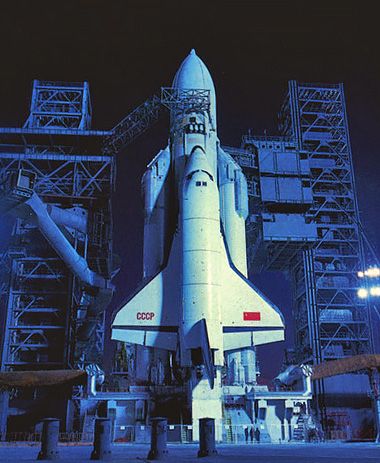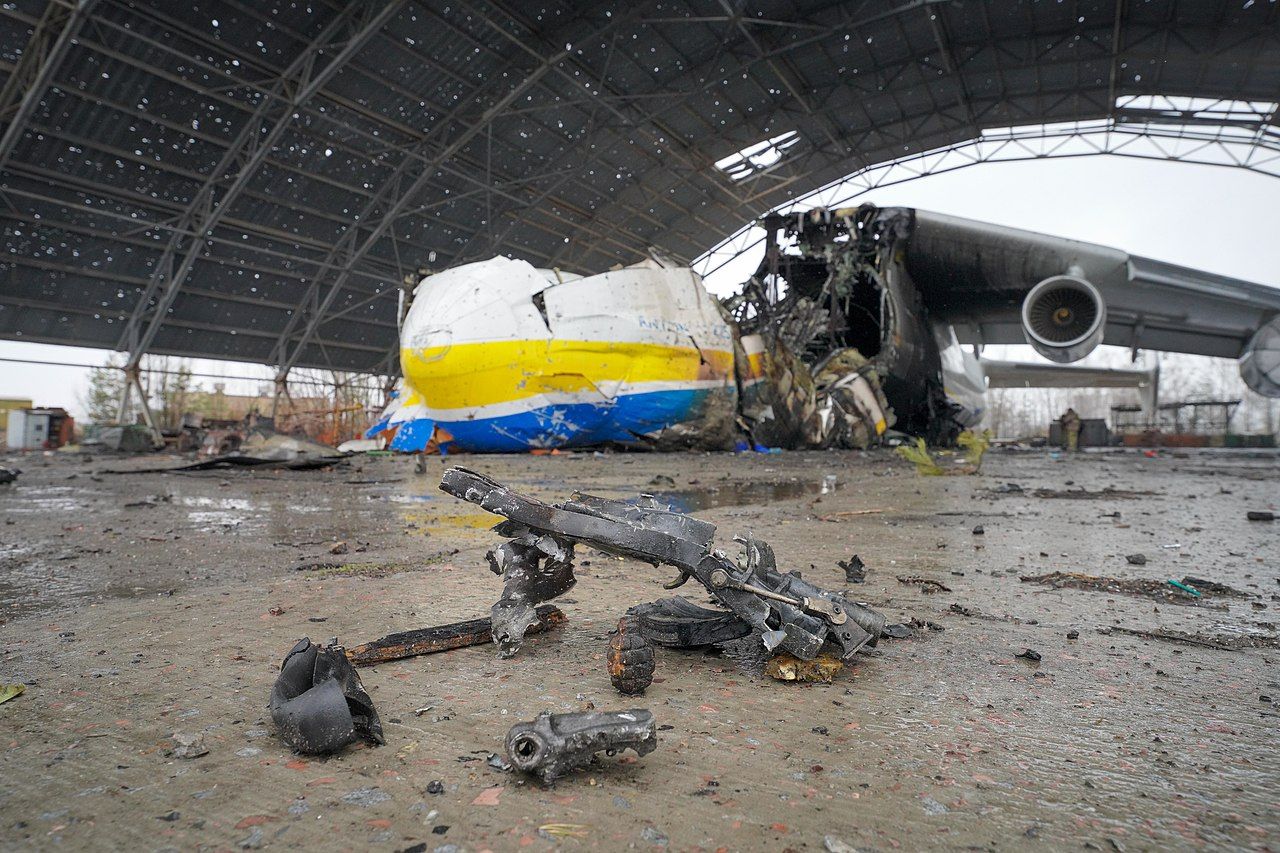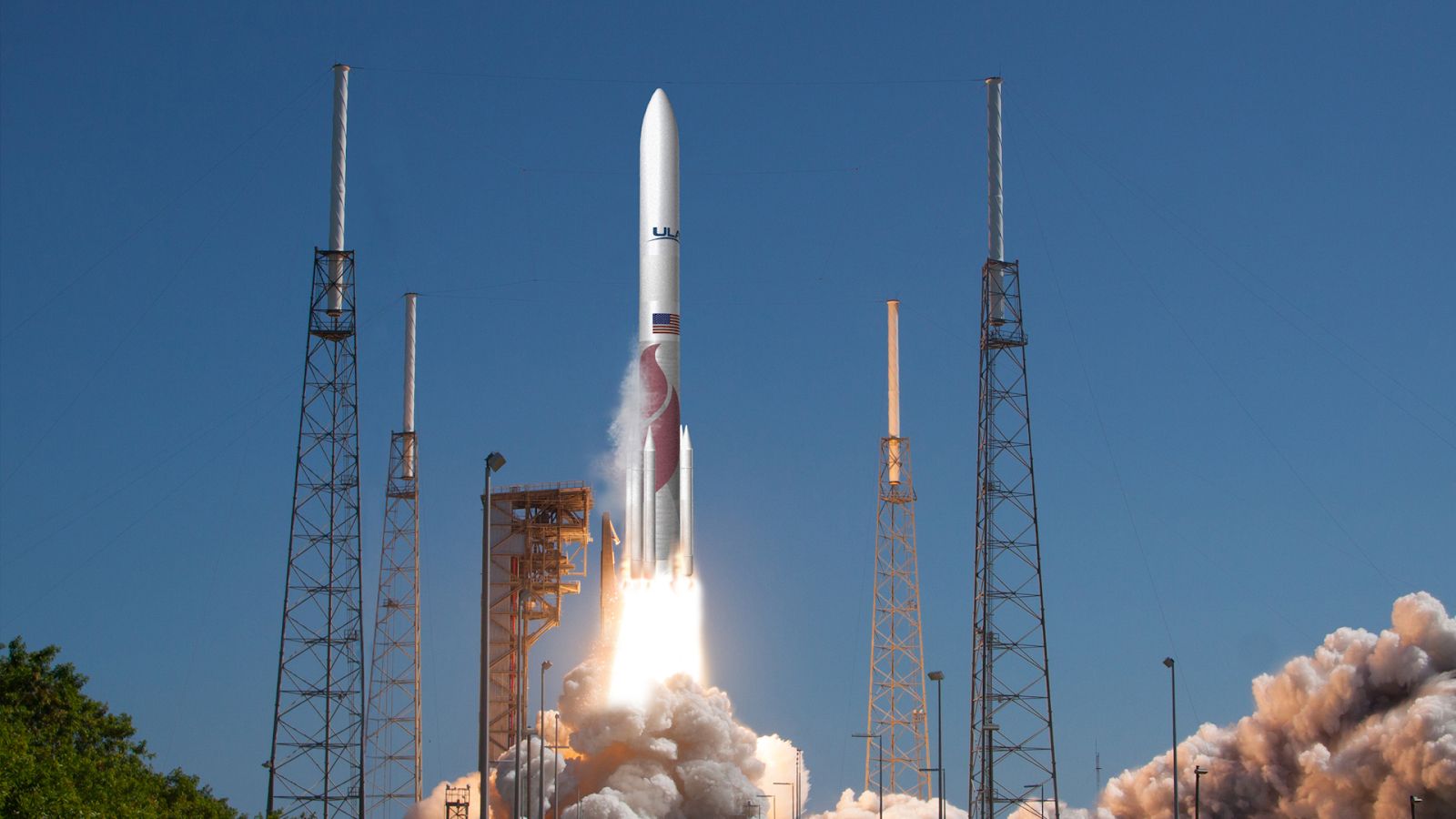How the War in Ukraine affects Space
by Hugo Filmer, Form VI
8 min. read — April 29, 2022
Russia’s war in Ukraine has been analyzed from a variety of perspectives, including humanitarian, political, and economic viewpoints. However, one of the most interesting, if perhaps not so pressing, aspects of the invasion has been its impact on space exploration and commercial space operations globally. As Ukraine is a significant if minor player in the space industry, and Russia is a major player, the destruction and sanctions have ended international cooperation on several projects and may spell the end of some rocket lines.
To begin, Ukraine has its own space program, inherited during the breakup of the USSR, which has been significantly set back by Russia’s invasion. Ukraine’s most notable space activity was previously the country’s operation of the Zenit rocket, which could launch from a converted oil rig near the equator to boost payload capacity to geostationary transfer orbit. However, Zenit ceased operations in 2017, partially due to Russia’s annexation of Crimea. Ukraine also operated other, smaller rockets in collaboration with Russia prior to the annexation, such as the Tsyklon and Dnepr families, but these were retired earlier than Zenit.
One notable piece of space hardware destroyed during the 2022 invasion is the iconic Antonov An-225, the largest aircraft in the world. The An-225 was an enlargement of the An-124 cargo aircraft, designed to transport pieces of the Buran-Energiya system before the fall of the USSR. Buran was effectively the Soviet space shuttle, designed in response to the American effort to ensure the USSR would have a similar capacity. While the US spaceport at Cape Canaveral’s ocean location enabled easy barge access for transporting large rocket stages to launch sites, the Soviet launch site, Baikonur Cosmodrome, is in the middle of the Khazak desert; no barge transport to be found there. Instead, the Soviets had to rely on rail transport of rocket stages from their factories in Eastern Russia to the pad. However, these rail lines could only transport rocket stages with a diameter of 4.15 meters or less. Therefore, to build the superheavy Energiya rocket intended to launch the Buran shuttle, the An-225 was constructed to ferry stages by air to the launch site, as well as the Buran orbiter itself.
But the An-225 had another role, one even more daring. It was to serve as the aerial launch platform for MAKS, a small Soviet spaceplane concept designed to complement the larger Buran. MAKS uniquely used a tripropellant rocket engine, burning refined kerosene and liquid oxygen early in the flight for high thrust and switching to liquid hydrogen in place of the kerosene later on for greater efficiency. It could be used as a crew ferry to carry cosmonauts to and from a space station.


Unfortunately, the USSR’s economic collapse leading to its breakup left the nation in no position to be developing new, advanced rockets, and so after just two test flights, including one successful flight carrying Buran, the Energiya design was scrapped. The MAKS system never even got the chance to fly. This breakup left the An-225 in Ukrainian ownership. While the aircraft struggled to find a role following the cancellation of its primary payloads, every once in a while a cargo payload so massive it could not be flown on another aircraft came along, and the AN-225 had reason to take to the skies once more. Ukraine’s space agency was also investigating a system known as Svityaz, capable of launching off the An-225 like MAKS and delivering large payloads to a variety of orbits.
However, during the battle of Antonov Airport in the first few hours of the Russian invasion, the sole completed An-225 was destroyed in its hangar as the Ukrainian forces resisted the Russian military operation to capture the airstrip, which was strategically close to Kyiv and would have allowed Russian forces an easy landing site to route troops and equipment into the city. While Russian forces did manage to take the airport, Ukrainian resistance was stiffer than expected and the airstrip became inoperable, ending Russian hopes of a quick end to the war. Nevertheless, it is unknown if the aircraft can be repaired, and unlikely that it will enter service again. The last glimmer of hope for MAKS and Svityaz seems to be extinguished.

Other Ukrainian space ventures are also in trouble. Startup Orbit Boy, founded by three chairmen of Ukraine’s space agency, aimed to use solid-fueled rockets launched from an Il-76 aircraft to drastically cut the time from launch contract signing to orbit for microsatellites while also offering a variety of launch inclinations, “in a dream to make delivery of microsats as easy as taking an Uber”. Orbit Boy’s rocket design featured an advanced solid fuel formula and had reached the stage of engine testing. Another Ukrainian startup, Promin Aerospace, was investigating an even more radical design philosophy- an autophagic rocket engine. This type of engine consumes itself as it fires, meaning that a rocket using it would shed its structural mass alongside propellant as it ascended. In effect, the rocket structure itself would be the propellant. Promin Aerospace claims this technology can enable cost-effective launch of tiny nanosatellites and will avoid leaving space debris in orbit. However, it is as of yet unclear if these startups can survive the economic setbacks and delays from the Russian invasion.
While Ukraine’s space program has certainly been significantly affected by the invasion, Ukraine also acts as a supplier of components and support to a variety of rocket projects around the globe, and the impact on these programs is perhaps the most visible consequence of the invasion as of yet. As one example, the RD-843 engine used on the AVUM upper stage of the French Arianespace rocket Vega is produced in the city of Dnipro, Ukraine by the Yuzhmash plant. Europe has the engines needed for remaining flights through 2023 and is now looking for ways to replace this engine for further future launches, as it is unclear if production will be able to continue. It’s not so easy, however, to replace a large rocket stage. Northrop Grumman uses its own Antares rocket to launch its Cygnus resupply spacecraft to the International Space Station, but production of the first stage of Antares is also handled by Yuzhmash. To make matters worse, the RD-181 engines that power this first stage are supplied by Russian companies. Given the situation, Antares doesn’t seem to have much of a future as a rocket design. Fortunately, Cygnus was designed to launch on a variety of rockets, and so is capable of operating without Antares, but with the dearth of heavy-lift flight slots available in today’s market, it will be difficult to find opportunities to launch.
In a way, the timing of this Russian invasion has been fortunate for American space capability. From 2011 to 2020, after the retirement of the Space Shuttle, America did not have a native way of reaching the ISS. Instead, it relied on the Russian Soyuz spacecraft. Now, however, SpaceX’s Crew Dragon capsule is flying regularly to the station, ensuring independent access. United Launch Alliance’s Atlas V rocket, first launched in 2002, used Russian-supplied RD-180 rocket engines, all the more concerning because of its important role in flying national security payloads. These engines left a serious vulnerability in America’s space security, and, following sanctions, Russia now refuses to sell any more of these engines to the US; Russian space agency chief Dmitri Rogozin even commented “let them fly on something else, like their broomsticks.” However, as of April 2021, all RD-180s needed to fly the remaining missions of the Atlas V have been delivered to ULA, and now the rocket’s replacement, Vulcan Centaur, is nearing its first flight, using all American-built engines. Had the Russian invasion occurred sooner, it’s possible that a significant gap in national security and astronaut transport would have opened up.

Finally, I’d like to talk about the impact of the invasion on Russia’s own space program. As a result of the hot war, Russia has faced significant sanctions in all aspects of its economy and international cooperation, including its space program. Most notably, European-Russian cooperation in space seems to be drawing to a close for now. ESA, the European space agency, planned to fly a camera experiment known as Pilot D on the Russian Luna 25 lunar lander, scheduled to launch later this year. Now, however, the agency has requested that their contribution be taken off the lander. ESA has also pulled out of the Luna 26 and 27 lander missions, and the ExoMars mission, an ESA-Russia collaboration to land a rover on Mars, has been postponed. While the rover is fully ESA-supplied, Russia would contribute the Kazachok landing module and the Proton rocket used to launch the spacecraft, a contribution that is now politically untenable.
Russia also seems to be closing off its launch services to international customers. In March, Russia halted the launch of five ESA missions scheduled to fly on Soyuz rockets over the economic sanctions it faced as a consequence of its invasion. These missions include the Euclid telescope, which will search the far reaches of the universe for dark matter, and two Galileo spacecraft, a European alternative to the American Global Positioning System. The most dramatic spike in Soyuz tensions so far has been the sudden cancellation of a OneWeb launch from Vostochny Cosmodrome in Eastern Russia. OneWeb is an internet constellation seeking to bring high-speed connectivity to underserved regions. This batch of the constellation’s satellites was scheduled to launch on March 4; however, Russia refused to fly the payload due to much of the investment for the constellation coming from the British government. OneWeb is now scrambling to find new rockets to replace the 5 or 6 Soyuz vehicles the constellation still needed to complete construction; as of now, the company has booked one SpaceX Falcon 9 and two of India’s GSLV Mk.III rockets to pick up some of the lost launches.
It will be difficult for Russia’s space economy to recover from the sanctions and anti-foreign backlash the country has subsequently imposed, and it will be at least as difficult for Ukrainian aerospace companies to pick up the pieces of their shattered industry and continue onward if anything of that industry survives the invasion. The future is still very uncertain, both for space exploration and Ukraine as a whole. Unfortunately, as onlookers in the great cosmic quest, there’s not a lot we can do but stay informed and keep up hope.